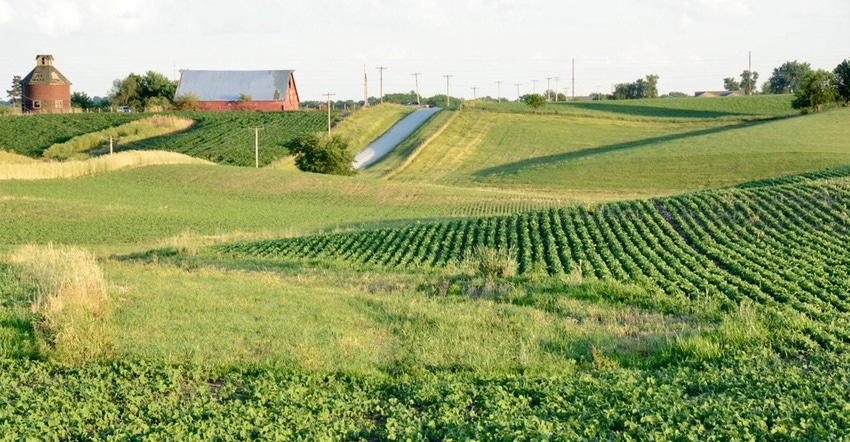November 13, 2018

When I’m traveling for business, it’s not unusual for a fellow traveler to ask what I do. My Natural Resources Conservation Service business card says: “Helping People Help the Land.” That statement means a lot to us NRCS folks, but most people need a little more explanation. My standard answer is, “We help farmers, ranchers and forest owners continue to produce an abundance of products but do it in such a way that ensures we protect the soil from erosion, keep the water and air clean, and make sure we have ample habitat for wildlife.”
If the conversation goes further, I explain that we accomplish this task by offering technical assistance. I share how we read the land, listen to how the producer operates, and then offer alternatives to address their natural resources concerns. We put that information together in the form of a conservation plan. It’s all voluntary, and if the producer wants to proceed with implementing any recommended practices, we can provide more detailed information and designs to make sure the practice fits his or her specific site.
We also offer financial assistance to help offset costs to implement conservation practices. While it’s true farmers can directly benefit by sustaining their productivity base in the long term, the initial investment of installing a conservation practice can be an obstacle. Our financial assistance programs aren’t meant to pay all the expense, just to help offset some of the costs. Producers have some real skin in the game. They invest considerable money and time to implement and maintain conservation practices.
Paying for it
Use of public funds is justified because we all benefit from a cleaner environment and more sustainable land use. If I’m asked to give examples of a conservation practice, a grassed waterway is my go-to practice. Most people have seen these strips of grass curving through a field; oftentimes you can even see them from an airplane window. Even people who know these strips of grass are meant to guide water off a field often don’t know these are precisely engineered conservation practices.
Grassed waterways have a shape, width, depth and slope specifically designed to handle the amount of water generated for that site. The grass type is carefully selected to allow water to run off the field fast enough to avoid drainage problems but slow enough to avoid erosion problems. In this part of the country, we usually have plenty of soil moisture — so much so that we typically include subsurface drainage tile along the waterway, so grass roots don’t get waterlogged and die. Grassed waterways prevent many tons of soil from leaving farm fields and ending up in our streams, rivers and lakes where it can create all kinds of havoc off-site. And there are the headaches resulting from gullies.
While the environmental benefits for grassed waterways are well-documented, there is another benefit to the public we often overlook: the benefits NRCS conservation programs provide the local economy. Farmers use our funds to hire skilled conservation contractors who typically live and work in the area. They purchase their fuel, grass seed and construction materials in these communities. Last year, Illinois NRCS distributed approximately $30 million of NRCS conservation program assistance funds that went directly to farmers who, in turn, funneled those dollars out locally. We can also include the NRCS employees who plan, survey and design the practices. They work, live and raise their families right there in these same communities.
I could tell this story a hundred times over for each type of conservation practice. The message reinforces how NRCS continues to help people and help the land.
Dozier is the Illinois state conservationist. Direct comments or questions to [email protected].
About the Author(s)
You May Also Like




